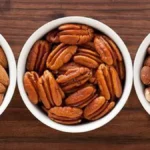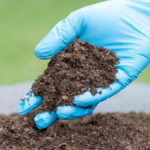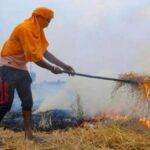Main Points In Hindi (मुख्य बातें – हिंदी में)
-
व्याख्यान और शोध: डॉ. हॉवर्थ बौइस ने सिम्पसन कॉलेज में "कैसे कृषि नीति पोषण सुरक्षा को बढ़ावा दे सकती है: एलएमआईसी में यह क्यों मायने रखता है" शीर्षक से व्याख्यान दिया। वे 2016 के विश्व खाद्य पुरस्कार विजेता हैं और उनका शोध एशिया में गरीब परिवारों के आहार पर केंद्रित है।
-
पोषण संबंधी कमी: बौइस ने बताया कि जिंक, आयरन, और विटामिन ए की कमी निम्न और मध्यम आय वाले देशों में पूर्वस्कूली बच्चों के लिए हानिकारक है, जिससे उनके मस्तिष्क के विकास और संज्ञानात्मक कार्य पर नकारात्मक प्रभाव पड़ता है।
-
फसल प्रजनन कार्यक्रम: बौइस ने गाजर और मक्का के प्रजनन कार्यक्रमों का उल्लेख किया, जिसमें गहरे नारंगी गाजर और उच्च पोषण मूल्य वाले पीले मक्का का विकास शामिल है, जिससे विटामिन ए का स्तर बढ़ सकता है।
-
बायोफोर्टिफाइड फसलें: बौइस ने 40 से अधिक देशों में बायोफोर्टिफाइड फसलों की उपलब्धियों का उल्लेख किया, जैसे कि जिंक चावल, आयरन बीन्स और विटामिन ए मक्का, और अगले कुछ वर्षों में 20 अन्य देशों में फसलों को जारी करने की योजना बनाई है।
- समुदाय में मान्यता: नाइजीरिया के एक गाँव ने बौइस को मानद प्रमुख के रूप में सम्मानित किया, जहाँ उन्हें मोती और एक राजदंड उपहार में दिया गया, जिससे उनके काम की स्थानीय स्तर पर सराहना हुई।
Main Points In English(मुख्य बातें – अंग्रेज़ी में)
Here are the main points from the text:
-
Lecture on Agricultural Policy: Dr. Howarth Bouis delivered a lecture at Simpson College on October 30, titled "How Agricultural Policy Can Promote Nutritional Security: Why It Matters in LMICs," highlighting his research focused on improving the diets of poor families in Asia and beyond.
-
Nutritional Deficiencies Impact: Bouis emphasized the harmful effects of deficiencies in zinc, iron, and vitamin A on preschool children in low and middle-income countries, stating that these deficiencies can impair cognitive development and overall brain function.
-
Biofortification Initiatives: He discussed successful biofortification programs, such as transforming the color of white maize to orange to increase its vitamin A content, similar to a previous USDA initiative for carrots, aiming to enhance the nutritional value of staple crops in Africa.
-
Global Reach of His Work: Bouis’s accomplishments include the introduction of biofortified crops in over 40 countries, with plans to roll out in an additional 20 countries, targeting crops like zinc rice, zinc wheat, and iron beans to improve nutritional intake.
- Recognition and Leadership: Bouis’s contributions have been recognized widely, and he was honored by a Nigerian village that made him an honorary chief, reflecting the community’s appreciation for his efforts in advancing nutritional security.


Complete News In Hindi(पूरी खबर – हिंदी में)
बुधवार, 30 अक्टूबर को, डॉ. हॉवर्थ बौइस ने सिम्पसन कॉलेज में एक व्याख्यान दिया, जिसका शीर्षक था, “कैसे कृषि नीति पोषण सुरक्षा को बढ़ावा दे सकती है: एलएमआईसी में यह क्यों मायने रखता है।” बौइस 2016 के विश्व खाद्य पुरस्कार विजेता हैं, जिनका शोध एशिया में गरीब परिवारों के आहार पर केंद्रित है। उनके शोध का विश्व स्तर पर विस्तार हुआ और उन्होंने 2003 में हार्वेस्टप्लस संगठन की स्थापना की। उनके काम ने मैक्सिको, अफ्रीका और एशिया में मुख्य फसलों के पोषण संबंधी मामले में सुधार किया है।
जिंक, आयरन और विटामिन ए की कमी, जो बोइस का प्राथमिक फोकस है, निम्न और मध्यम आय वाले देशों में पूर्वस्कूली बच्चों के लिए हानिकारक है। दुनिया भर में दो में से एक प्रीस्कूल बच्चा इन कमियों से पीड़ित है। बोइस ने कहा, “अच्छी खुराक न लेने का एक हानिकारक प्रभाव यह है कि यह आपके मस्तिष्क के विकास, जीवन भर आपके संज्ञानात्मक कार्य को धीमा कर देता है।”
वर्षों पहले, यूएसडीए के पास गाजर में विटामिन ए के स्तर को बढ़ाने के लिए एक प्रजनन कार्यक्रम था। मूल रूप से हल्के पीले या सफेद रंग की गाजर को गहरे नारंगी रंग में बदल दिया गया और उपभोक्ता बाजार में पेश किया गया। बोइस के नेतृत्व में एक समान प्रजनन कार्यक्रम अफ्रीका में मक्का पर केंद्रित है। लोग सफेद मक्का खाते हैं, और पीला मक्का पशुओं को खिलाया जाता है, क्योंकि इसमें पोषण मूल्य और स्वाद कम होता है। मक्के में विटामिन ए का स्तर बढ़ाने के लिए इसका रंग गाजर के समान नारंगी कर दिया जाता है। विटामिन ए के साथ उच्च पोषण मूल्य के अलावा यह मक्के को प्रभावित नहीं करता है।
बोउई की उपलब्धियों में 40 से अधिक देशों में बायोफोर्टिफाइड फसलें शामिल हैं और अगले कुछ वर्षों में, उन्हें अन्य 20 देशों में फसलें जारी करने की उम्मीद है। कुछ बायोफोर्टिफाइड फसलों में जिंक चावल, जिंक गेहूं, विटामिन ए मक्का, विटामिन ए कसावा, विटामिन ए शकरकंद, आयरन मोती बाजरा और आयरन बीन्स शामिल हैं।
बोइस ने कहा, “हम वास्तव में उन बच्चों और महिलाओं में बेहतर संज्ञानात्मक कार्य दिखाने में सक्षम हुए हैं, जिन्होंने उच्च आयरन बीन्स और उच्च आयरन मोती बाजरा खाया।”
बोइस ने अपने काम के उस हिस्से पर प्रकाश डाला, जो नाइजीरिया के एक गाँव में स्थित था। गाँव ने एकजुट होकर बोइस को मानद प्रमुख बनाने का निर्णय लिया। वह समारोह में शामिल हुए और उन्हें मोती और एक राजदंड उपहार में दिया गया।
बौइस वर्तमान में फिलीपींस में रहते हैं, वह देश जहां उन्होंने स्टैनफोर्ड विश्वविद्यालय से पीएचडी प्राप्त करने से पहले एक स्वयंसेवी संगठन के हिस्से के रूप में तीन साल तक यात्रा की थी। वह लॉस बानोस में रहते हैं जहां फिलीपींस का कृषि विश्वविद्यालय और अंतर्राष्ट्रीय चावल अनुसंधान संस्थान स्थित है।
विश्व खाद्य पुरस्कार फाउंडेशन का मुख्यालय डाउनटाउन डेस मोइनेस में है। प्रत्येक अक्टूबर में, फाउंडेशन वैश्विक नेताओं को खाद्य और कृषि उद्योग में नवीनतम चिंताओं पर चर्चा करने के लिए आमंत्रित करता है। सम्मेलन में 60 से अधिक देशों के 1,200 से अधिक प्रतिभागी भाग लेते हैं। वार्षिक विश्व खाद्य पुरस्कार उन विशेषज्ञों को मान्यता देता है जिन्होंने दुनिया में भोजन की गुणवत्ता, मात्रा या उपलब्धता में सुधार किया है। इन व्यक्तियों को $500,000 और एक विश्व खाद्य पुरस्कार मूर्तिकला से सम्मानित किया जाता है।
Complete News In English(पूरी खबर – अंग्रेज़ी में)
On Wednesday, October 30, Dr. Howarth Bouis gave a lecture at Simpson College titled “How Agricultural Policy Can Promote Nutritional Security: Why It Matters in LMICs.” Bouis is the 2016 World Food Prize winner known for his research focused on improving the diets of poor families in Asia. His work has expanded internationally, leading him to establish the HarvestPlus organization in 2003. His efforts have improved nutritional outcomes for key crops in Mexico, Africa, and Asia.
Bouis primarily focuses on deficiencies in zinc, iron, and vitamin A, which are harmful to preschool children in low- and middle-income countries. Around one in two preschoolers worldwide suffer from these deficiencies. Bouis stated, “One harmful effect of poor nutrition is that it slows down your brain development and cognitive function throughout your life.”
Years ago, the USDA had a breeding program to increase vitamin A levels in carrots, changing them from light yellow or white to deep orange for the consumer market. A similar breeding program led by Bouis is focused on maize in Africa, where people typically eat white maize while yellow maize is usually fed to animals due to its lower nutritional value and taste. The goal is to enhance the vitamin A level in maize by changing its color to orange, similar to carrots, while maintaining its overall quality.
Bouis’s achievements include developing biofortified crops in over 40 countries, with plans to introduce crops in an additional 20 countries in the coming years. Some of the biofortified crops include zinc rice, zinc wheat, vitamin A maize, vitamin A cassava, vitamin A sweet potatoes, iron pearl millet, and iron beans.
Bouis mentioned, “We have been able to show improved cognitive function in children and women who consumed high iron beans and high iron pearl millet.”
He highlighted his work in a village in Nigeria, where the community came together to honor him as the honorary chief. He attended the ceremony and was gifted with beads and a staff.
Currently, Bouis lives in the Philippines, where he traveled for three years as part of a volunteer organization before earning his PhD from Stanford University. He resides in Los Baños, home to the University of the Philippines and the International Rice Research Institute.
The World Food Prize Foundation is based in downtown Des Moines. Each October, the foundation invites global leaders to discuss the latest issues in the food and agriculture sectors. The conference includes over 1,200 participants from more than 60 countries. The annual World Food Prize recognizes individuals who have improved the quality, quantity, or availability of food worldwide, awarding them $500,000 and a World Food Prize sculpture.








